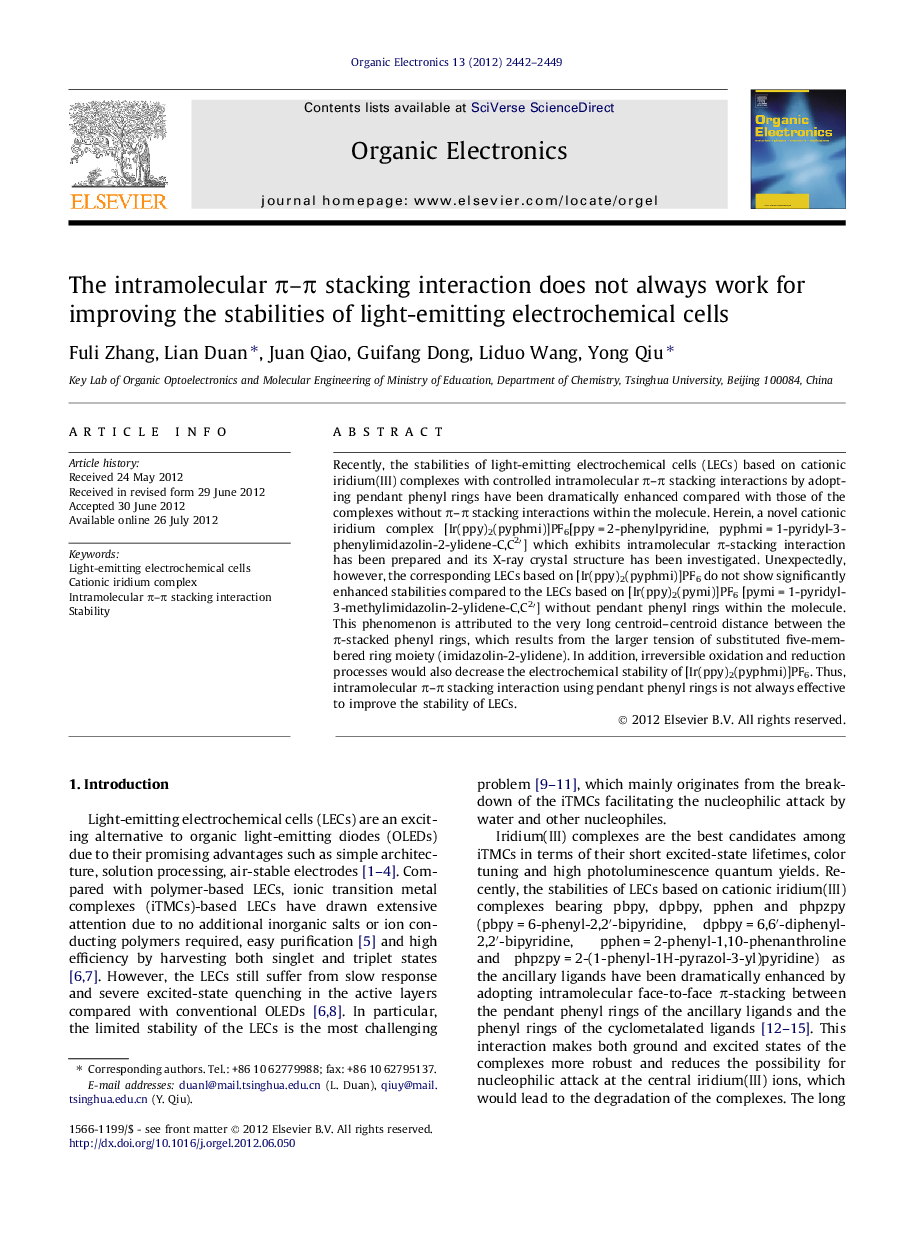| Article ID | Journal | Published Year | Pages | File Type |
|---|---|---|---|---|
| 1264024 | Organic Electronics | 2012 | 8 Pages |
Recently, the stabilities of light-emitting electrochemical cells (LECs) based on cationic iridium(III) complexes with controlled intramolecular π–π stacking interactions by adopting pendant phenyl rings have been dramatically enhanced compared with those of the complexes without π–π stacking interactions within the molecule. Herein, a novel cationic iridium complex [Ir(ppy)2(pyphmi)]PF6[ppy = 2-phenylpyridine, pyphmi = 1-pyridyl-3-phenylimidazolin-2-ylidene-C,C2′] which exhibits intramolecular π-stacking interaction has been prepared and its X-ray crystal structure has been investigated. Unexpectedly, however, the corresponding LECs based on [Ir(ppy)2(pyphmi)]PF6 do not show significantly enhanced stabilities compared to the LECs based on [Ir(ppy)2(pymi)]PF6 [pymi = 1-pyridyl-3-methylimidazolin-2-ylidene-C,C2′] without pendant phenyl rings within the molecule. This phenomenon is attributed to the very long centroid–centroid distance between the π-stacked phenyl rings, which results from the larger tension of substituted five-membered ring moiety (imidazolin-2-ylidene). In addition, irreversible oxidation and reduction processes would also decrease the electrochemical stability of [Ir(ppy)2(pyphmi)]PF6. Thus, intramolecular π–π stacking interaction using pendant phenyl rings is not always effective to improve the stability of LECs.
Graphical abstractFigure optionsDownload full-size imageDownload as PowerPoint slideHighlights► Cationic iridium(III) complexes with controlled intramolecular π–π stacking interactions. ► Light-emitting electrochemical cells. ► Not always effective to improve the stability.
